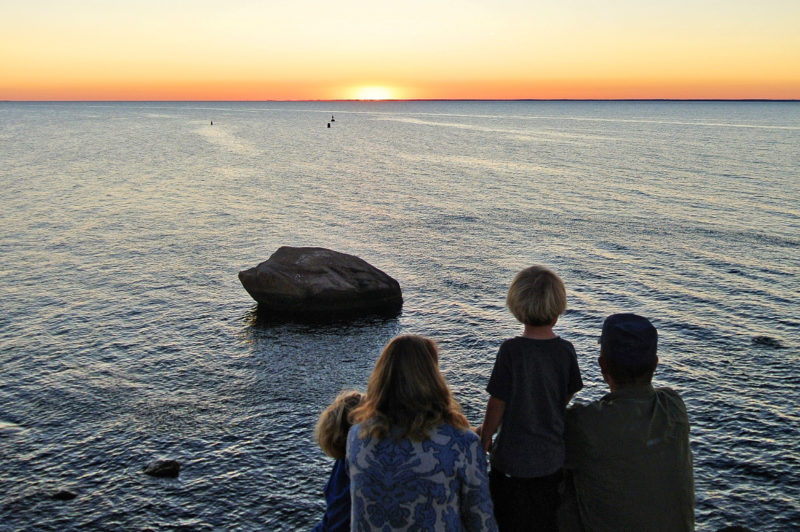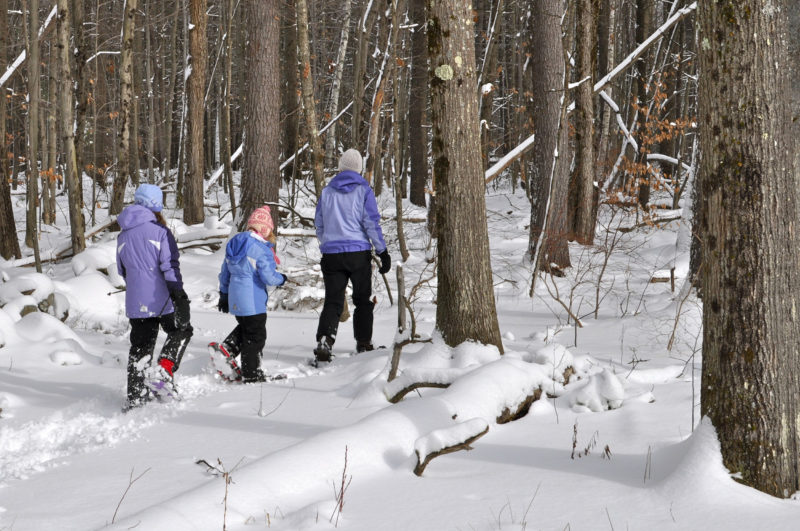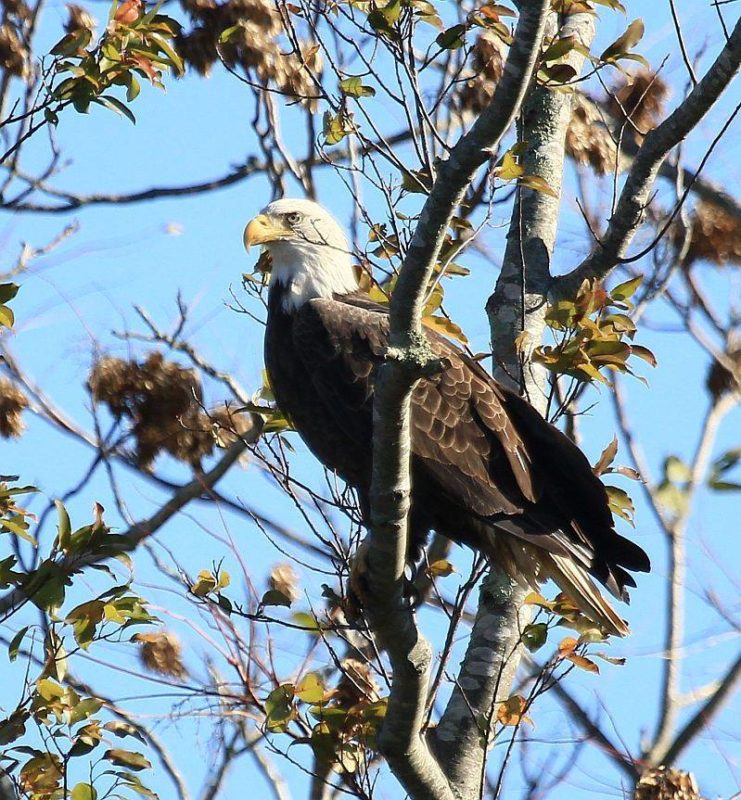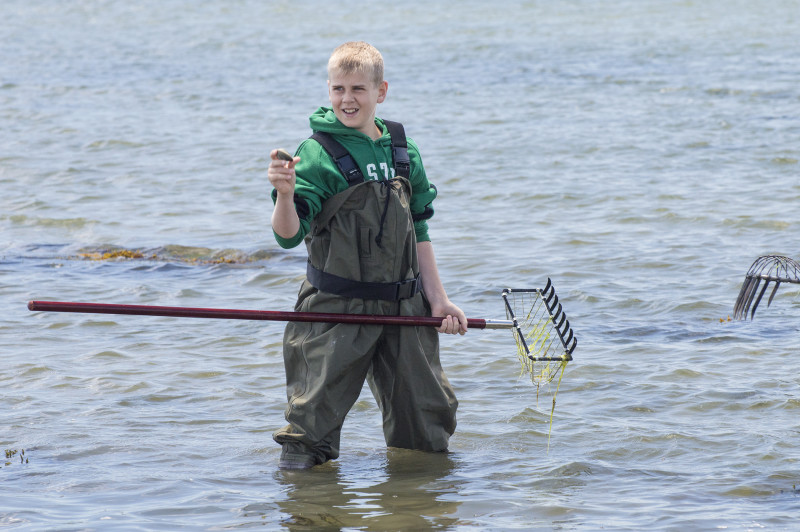Explore your Bay through these kid-friendly February vacation week activities
For kids and parents alike, February’s school vacation week offers a perfect opportunity to break winter’s gloom and enjoy some quality time together.
Outdoor adventures are just the thing to engage kids and give them space to exercise their minds and bodies. Sure, it may be cold, but children typically don’t mind if they are interested and excited.
To help you plan your week of adventure, we gathered up 8 different outdoor winter activities you can enjoy on the beaches, trails, woodlands and waterways around your Buzzards Bay. And if you’d like to join us on a guided exploration during your break, check out our complete listing of Bay Adventures during February vacation week!

Start the day together with a spectacular sunrise over Buzzards Bay.
1. Enjoy a sunrise
Though the days are still short, the winter months have one major benefit for those who like to sleep in: sunrise is much later in the day than in the summer! With the first light peeking over the horizon just around 7 AM, you can catch your well-deserved vacation rest and still get in a stunning sunrise on Buzzards Bay’s abundant east-facing coastline.
Make sunrise into a family-friendly activity by bringing along coloring supplies and encouraging kids to capture the colors they see on paper. Or, get them started on a photography hobby and help them use a phone or camera to capture it! Some of our favorite spots for an early-morning spectacle include West Island State Reservation and Town Beach in Fairhaven and Nobska Lighthouse in Falmouth. Read our roundup of the Bay’s 15 best sunrise spots to find one near you.
2. Take a bike ride
Beat the cold and get moving during your break! Bike riding is a great way to take in one-of-a-kind views of the Bay and its natural habitats while staying warm with some exercise. What’s more, many places around the Bay are accessible by paved bike paths that provide a safe, well-marked place to ride off main roads. Our list of ten paved bike paths around the Bay has plenty of places where you can get pedaling – just don’t forget your gloves!
3. Try snowshoeing

Explore the woods with your kids on snowshoes this winter! (Image: Stephen Ritchie/Flickr)
If we’re lucky enough to get some snow during February break, snowshoeing is a great outdoor activity that’s accessible to kids of all ages. Kid-sized snowshoes start around age 3, and can be adjusted as they grow! Or, if you’re not ready to invest in your own pair, you can find snowshoes for rent at many local outfitters, or even for free at local libraries.
If you and your kids are starting out for the first time, we have a few tips for getting started. First, choose a flat terrain, such as your yard, to get kids used to walking around in showshoes – and do so on a relatively mild day, to avoid kids quickly getting too cold to enjoy the challenge. Since you can’t easily move backwards on snowshoes, teach kids how to do a U-turn if they need to change direction.
When you’re ready set out on your first adventure, find a place to explore on our list of 7 places to go snowshoeing and cross-country skiing in the area. Choose a short loop or an out-and-back trail for the first try-out adventure. And one more tip: as a backup plan, bring along a baby carrier or a sled to pull behind you in case kids get too tired to continue!
4. Make a bird feeder
The winter months are a great time to become familiar with the local birds that stick around our backyards and woodlands year-round. Get kids interested in bird-watching by creating an easy-to-make bird feeder for your yard: just spread peanut butter on a pine cone and roll it in bird seed, then hang it from a nearby tree with a piece of yarn. You’ll be shocked at how many different kinds of birds come to visit!
Tie in your craft with an outdoor adventure by collecting your pine cones on a nearby trail. Some of our favorite piney places to explore include Headwaters Conservation Area in Westport, Myles Standish State Forest in Carver/Plymouth, Great Neck Wildlife Sanctuary in Wareham, and Breivogel Ponds Conservation Area in Falmouth.
5. Look for bald eagles

In winter, bald eagles are frequently seen on the Acushnet River in Acushnet, New Bedford, and Fairhaven.
Even if your kids aren’t quite ready to tell the difference between a cardinal and chickadee, we bet they’ll get excited by watching a majestic bald eagle swoop down to catch a fish in nearby waters. Thanks to strong protections and a state reintroduction program, bald eagles are making a recovery in the Buzzards Bay region – and have become an excitingly common sight in the winter as they move towards the coast in search of food.
Some of the most common sites to spot bald eagles include Watuppa Pond in Fall River, Betty’s Neck in Lakeville, and along the Acushnet River, including at The Sawmill. To learn how to identify these beautiful birds and find more places to seek them out, check out our bald eagle guide.
6. Go maple sugaring
In late winter and early spring, maple trees begin to flow with their delicious, sticky sap. This only happens when maples experience freezing nights and warm days, which “pumps” the sap through the tree as it periodically freezes and defrosts. During this time, maple producers will tap their trees to collect this sap, and then boil it to create concentrated syrup. If you have healthy trees on your property, you can try this at home, or join one of the Coalition’s annual early-spring maple tapping walks at LaPalme Farm in Acushnet.
And if you don’t have maple trees you can tap yourself, you can still have some winter fun with maple syrup by making maple taffy candy. All you need is hot maple syrup and snow or crushed ice!
7. Go winter shellfishing – then cook up a local recipe!
 You might associate stuffed quahogs and oysters on the half-shell with warm summer days, but did you know that many of our tough New England shellfish can be harvested during the winter months? What’s more, digging shellfish is a fun natural treasure hunt that helps kids connect with where their food comes from!
You might associate stuffed quahogs and oysters on the half-shell with warm summer days, but did you know that many of our tough New England shellfish can be harvested during the winter months? What’s more, digging shellfish is a fun natural treasure hunt that helps kids connect with where their food comes from!
Oysters and scallops are usually harvested exclusively in the winter, while rules on quahogs differ from town to town. (An important rule of thumb is to only dig quahogs when temperatures are above freezing, as any exposed clams can die if temperatures are too low.) Check your local regulations in our guide to quahog digging in Buzzards Bay to find out what’s permitted near you.
Once you’ve collected your tasty catch, it’s time to put them to good use. If your family needs inspiration to get cooking, our list of coastal recipes made with Bay fish and shellfish has some suggestions to get your stomach grumbling.
8. Read a book together
Some days, the weather just doesn’t cooperate with an outdoor itinerary. When raw winter weather keeps you inside, you can still explore the wildlife, ecology, and culture of Buzzards Bay through some of the beautiful and fascinating books that have been written about our region. Pick one to read together as a family and share the adventure – we bet it will have you itching to get back outside and exploring.